- ABOUT US
- PROGRAM AREAS
- CONSERVATION APPROACH
- EDUCATION
- MULTIMEDIA
2023 Featured Stories
December
Successful Pacific coral reef and mapping mission honoring NOAA leader comes to end
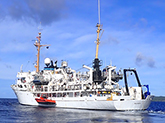
RICHARD stands for Rainier Integrates Charting Hydrography and Reef Demographics and refers to a first-of-its-kind collaborative mission between NOAA's Coral Reef Conservation Program and NOAA's Office of Coast Survey that occurred over two years in two Pacific Islands regions—the Marianas archipelago in 2022 and American Samoa and the Pacific Remote Island Areas in 2023. Rear Admiral Richard Brennan was the greatest champion of this mission, and the two cruises would not have been possible without his vision and leadership.
US Virgin Islands hosts the 47th US Coral Reef Task Force Meeting
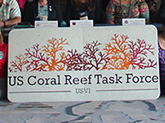
The United States Virgin Islands hosted a successful U.S. Coral Reef Task Force Meeting in October 2023 that showcased local projects, partners, and resources while fostering national coordination on coral reef issues and initiatives.
International meeting brings global leaders together to address coral reef conservation
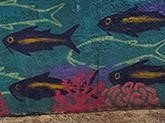
The United States hosted the 37th General Meeting of the International Coral Reef Initiative (ICRI) from September 18th-23rd, 2023 in Kailua-Kona, Hawai'i. ICRI is a global partnership working to preserve and protect coral reefs. The key goals of the meeting were to discuss the achievements of ICRI and its members, share knowledge and experiences, and drive the implementation of the 2021 – 2024 Plan of Action: Turning the Tide for Coral Reefs.
November
NOAA unveils new tool for exploring national coral reef monitoring data
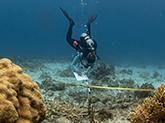
NOAA's National Coral Reef Monitoring Program (NCRMP) launched a new data visualization tool on NOAA's Geoplatform for shallow tropical coral reef ecosystem data, which provides free and easy-to-access information on the status and trends of U.S. coral reefs.
August
Finfish fact sheets aim to maintain healthy fisheries in Micronesia
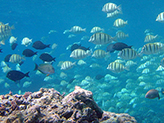
The Pacific Islands Managed and Protected Area Community (PIMPAC) has developed species fact sheets on 30 finfish species that are common and important fisheries species in Micronesia. This information can help inform management measures to maintain healthy fisheries.
Using underwater medicine to prevent disease-related mortality on corals in Dry Tortugas National Parks
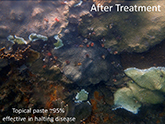
As corals in Dry Tortugas national park were being ravaged by an unprecedented disease, the NOAA-NFWF Coral Emergency Response Fund was used to quickly and efficiently implement intervention cruises that treated over 12,500 actively diseased corals, potentially saving up to 331,000 coral outplants.
July
Charting a course for coral conservation: Lessons learned from the U.S. Regional Caribbean Stony Coral Tissue Loss Disease Workshop
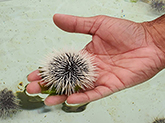
Coral reef researchers and managers from the U.S. Virgin Islands, Puerto Rico, and Florida met together in San Juan, Puerto Rico for the 2023 U.S. Regional Caribbean Stony Coral Tissue Loss Disease (SCTLD) Workshop. The workshop aimed to share information and experiences across the jurisdictions, improve coordination of U.S. Caribbean coral disease response efforts, and enhance collaboration on coral rescue and communications.
More Than $910,000 Recommended for Ruth Gates Coral Restoration Innovation Grants Projects
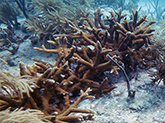
NOAA is committed to working with partners to save and restore the world’s coral reefs. To support this mission, we have recommended funding for one new project and have awarded continued funding to four ongoing, multi-year projects under the Ruth Gates Coral Restoration Innovation Grants. The 2023 recommended and awarded funding totals approximately $913,000. It will support projects that enhance coral resilience and improve the long-term success and efficiency of shallow-water coral reef restoration in a changing climate.
Socioeconomic Monitoring for Mission: Iconic Reefs
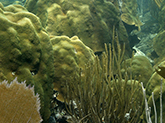
In the Florida Keys, the reef forms the foundation of the region's identity, providing habitat for ecologically and economically important species and drawing visitors seeking to dive, snorkel, and fish. All of these benefits rely on healthy coral reef ecosystems, but this reef, along with many of our reefs, is threatened by pollution, climate change, coral disease, and more. In response, Mission: Iconic Reefs is underway to change the trajectory of the health of seven iconic coral reefs in Florida.
June
Strategic Planning for Protected Area Capacity-building and Conservation in the Pacific
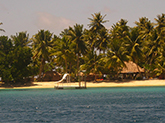
The Pacific Islands Managed and Protected Area Community (PIMPAC) is a long-term capacity-building program and a community of managers collaborating to enhance protected area management in partnership with local communities in the Pacific. It was created in 2005 and provides capacity-building opportunities to community members and government and non-government staff from Hawaii, Guam, CNMI, American Samoa, Palau, the Federated States of Micronesia, and the Marshall Islands.
April
Fishermen, surfers, and scientists unite to restore degraded reefs in Hawai'i
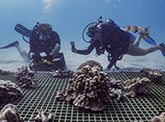
Similar to reefs around the world, the coral reefs of Hawai'i are being degraded and lost due to human impacts. This degradation decreases reef biodiversity, fisheries, and overall ecosystem health. On O'ahu in particular, reef health directly impacts economic livelihoods, through fisheries, biodiversity, tourism, and coastal protection. However, open ocean swells and an active fishing sector means restoration techniques must be tailored to the unique environment there. As a result, Kuleana Coral Restoration (KCR) was founded by fishers, surfers, and scientists to pair traditional knowledge with scientific techniques to restore West O'ahu reefs and cultivate reef resilience.
Rapid response to coral emergencies requires a novel funding source
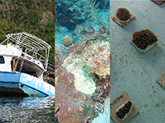
Coral reef conservation requires a multi-pronged approach from protection of pristine coral areas to restoration of significantly degraded areas. As part of their approach, coral managers need to have the ability to respond quickly to a disaster, be it natural or man-made. Hurricane relief funds and resources to respond to ship groundings come to mind. One very clear stressor that needs emergency help is coral disease, specifically Stony Coral Tissue Loss Disease in Florida and the Caribbean.
Lexie Sturm: The Coral Program's 2023 Knauss Fellow
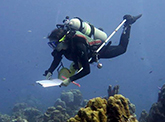
In February, we welcomed our 2023 Knauss fellow, Lexie Sturm. Lexie is sponsored by Florida Sea Grant and received her Ph.D. in Integrative Biology from Florida Atlantic University's Harbor Branch Oceanographic Institute. Lexie's fascination with coral reefs started from a young age when she first learned how to snorkel (with arm floaties on because she still couldn't fully swim!).
March
Restoring corals after physical damage from vessel groundings and natural disasters
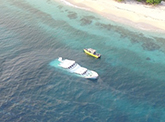
Since 2006, the NOAA Restoration Center has performed restoration at 142 sites in Puerto Rico and the U.S. Virgin Islands and reattached over 60,000 corals, many of which are listed as endangered or threatened.
Coral nurseries are helping to restore coral reefs in Saipan, CNMI
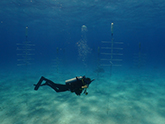
While Saipan, in the Commonwealth of the Northern Mariana Islands, seems remote, the coral reefs are threatened by bleaching and crown-of-thorn starfish outbreaks. To help corals recover from past events, corals are being grown in nurseries in Saipans lagoon and then outplanted on degraded reefs.
February
Coral Management Fellow Contributes to Hawai'i Division of Aquatic Resources' Makai Restoration Plan
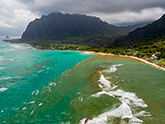
Bert Weeks, National Coral Reef Management Fellowship class of 2020-2021, was born and raised in Hawai'i on the Island of O'ahu and returned home after completing his master's degree at Scripps Institution of Oceanography at the University of California San Diego. During his two-year fellowship, he worked at the State of Hawai'i Department of LandT and Natural Resources (DLNR) Division of Aquatic Resources (DAR). One of his focus areas was to improve coral restoration in Hawai'i through the creation of a state-wide coral restoration action plan.
January
Data Management on the High Seas
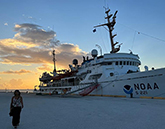
As a Data and Information Manageme,nt Specialist for the Coral Reef Information System (CoRIS), I am used to looking at the results of a research project — after all files have been assembled into neatly organized "data packages". Everything can be done online, so we data managers rarely get a chance to leave the office for fieldwork like other scientists.
About Us

The NOAA Coral Reef Conservation Program was established in 2000 by the Coral Reef Conservation Act. Headquartered in Silver Spring, Maryland, the program is part of NOAA's Office for Coastal Management.

The Coral Reef Information System (CoRIS) is the program's information portal that provides access to NOAA coral reef data and products.
Work With US
U.S. Coral Reef Task Force
Funding Opportunities
Employment
Fellowship Program
Contracting Assistance
Graphic Identifier
Featured Stories Archive

Access the archive of featured stories here...
Feedback
Thank you for visiting NOAA’s Coral Reef Conservation Program online. Please take our website satisfaction survey. We welcome your ideas, comments, and feedback. Questions? Email coralreef@noaa.gov.
Stay Connected
Contact Us
NOAA’s Coral Reef Conservation Program
SSMC4, 10th Floor
1305 East West Highway
Silver Spring, MD 20910
coralreef@noaa.gov
